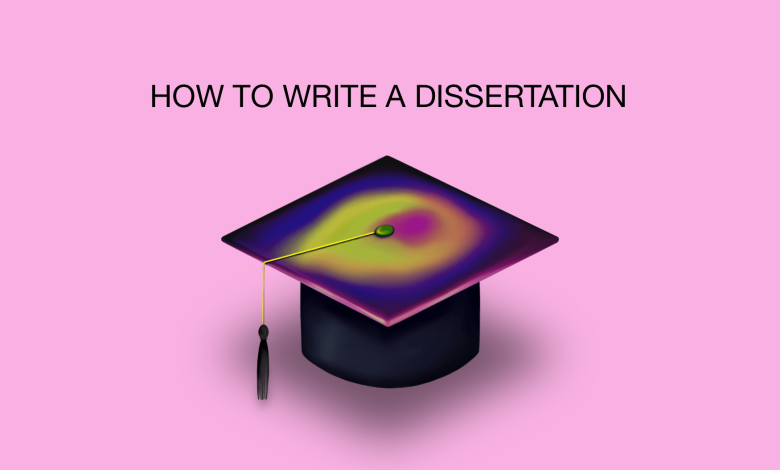What Is a Dissertation?
Check out the step-to-step guide of writing a dissertation correctly!

A dissertation has always been an integral part of academic assignments. No matter what course you wish to pursue and the degree you wish to master, you are sure to come across dissertations at least once or twice in the course of your studying that subject. Attending college classes via an online class app, completing the huge academic syllabus at hand, and on top of that, writing an entire dissertation or thesis can become way too overwhelming.
The aim of asking students to prepare a dissertation is to analyse their research skills, critical-thinking abilities, organizational skills and assess their knowledge in the concerned subjects. If you have got a dissertation to write and are feeling a bit panicky as to how you can start with this work, know that there is nothing to worry about. In fact, it is usual to feel a bit lost, initially. But yes, once you follow certain tips and know well the exact writing structure to be followed, you will face no problem in completing the thesis.
Taking the help of educators as they teach online the various intricacies involved in a dissertation is undoubtedly helpful. But, you need a proper format and a list of clear instructions to know how to do it with utmost perfection. So, keep reading!
General Structure Of A Dissertation
Always remember that a dissertation doesn’t have to stick to a definite structure. This is because its format and order of putting the various headings and sub-topics will differ depending upon the kind of content you are writing, the subject you have chosen, and the topic you have been assigned.
Take these pointers into consideration.
- If the dissertation is on the subject of Humanities, it is written more like a long narrative piece or an essay. In these types of dissertations, the content is written in a way so that it makes an argument to support the core thesis statement. You can even include some case studies or sub-topics to enrich the written matter. Use good, credible sources for your research and taking information from a great deal of books is going to help you produce a strong dissertation.
- If you are doing an empirical dissertation on any science-based subject, the structure will not be in the form of an essay per se. The main focus of this type of dissertation will be to represent the data that you have obtained from your experiments or research work and then express the obtained information clearly. You may even have to do some laboratory-based work and write down the observations about it in a well-descriptive manner.
What Is The Word Count Of A Dissertation?
It is always advisable that you write the dissertation by adhering to the word limit your educator or department has specified. In any case, if you have not been informed about the word limit, it is always better to know its generic word count.
- The word limit may vary from 10,000 to 12,000 words if you are an undergraduate student pursuing a Bachelor’s Degree in your designated subject.
- The word limit goes a bit higher to 15,000 to 25,000 words if you are pursuing a Master’s degree in your chosen subject.
- And lastly, if you are a PhD student, the word count can be above 50,000 words.
Format Of Writing A Dissertation
- Title Page
Under this heading, write down all your credentials- your name, course name, degree, dissertation title, college/university name, submission date and supervisor/mentor’s name.
2. Acknowledgement
This section will basically contain your thankful note and appreciative words for the help you have received from your professors, educators, mentors, parents and friends.
3. Abstract
It contains your aim and purpose for doing the dissertation. You can write about your research technique and what you have found out, and what you will be discussing in the paper.
4. Table Of Contents
Write the “Contents” section to give a quick overview of the sub-topics that you have included in the dissertation. In that way, it will be easier for the readers to navigate through your dissertation.
5. Listings
List down the abbreviations, tables and figures you have used in the dissertation paper for a better understanding of the readers.
6. Introduction
As you already know, here you have to give an apt beginning to the topic and disclose your objectives and purpose of doing the work.
7. Methodology
Here, you have to write down the research methods and strategies you have employed to write the content of the thesis.
8. Results/Discussions
Under these headings, you have to explain the results of your research, as well as, the various findings you have got. Now elaborate on the implications of the research findings and descriptively write the content.
9. Conclusion
Explain how the research succeeded in answering the question at hand, and bring an end to the discussion of the thesis.
10. Reference List
Now, list down the sources from where you have taken the material to express your argument in the thesis. You may follow APA, MLA or any other style that your professor has asked you to.
Conclusion
Produce the best dissertation by taking help from the above structure. Research well and bring out your viewpoint. Complete it with all your heart and feel a great sense of pride as you get done with it. Happy Researching!




